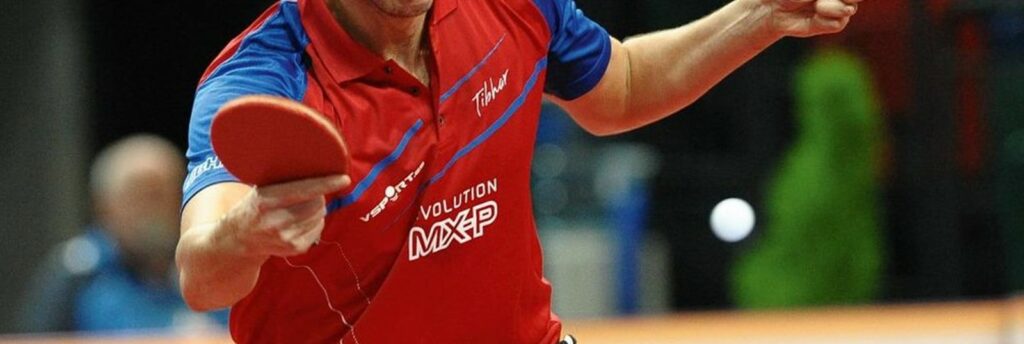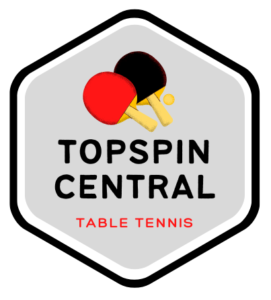Choosing the right table tennis blade can be a difficult process because there are so many variables to consider. One of the most important considerations you need to make is about the weight of the blade. In this article, I’ll explain why a blade’s weight is so important and how it affects its suitability to different playing styles.
Does the Weight of the Blade Matter?
The weight of a table tennis blade affects how much power it is capable of producing and how quickly a player can react and return the ball. Heavier blades are more powerful so the ball will travel faster when struck. Lighter blades make it easier for a player to react to the opponent’s shot.
Heavy vs Light Blades
Heavy table tennis blades feel more powerful and require less effort to hit the ball with force. However, lighter blades feel more agile. Heavy blades are best suited to players who stand further from the table, whereas lighter blades such close-table counter-attacking playstyles.
| Light Blade | Heavy Blade |
| More agile so the player can react faster | More powerful so the ball moves faster |
| Suits players who stand close to the table | Suits players who stand far away from the table |
| Good for counter-attacking | Good for smashing, driving and blocking |
Effect on Power
A heavier blade is more powerful than a lighter blade. This means that if the player uses the same effort for the stroke, the ball will travel faster when struck with the paddle when using the heavier blade. In other words, you do not have to put as much force into the stroke to get the ball to travel as fast with a heavy blade, whilst with a light blade you’ll need to have a more forceful stroke.
This doesn’t always mean that a heavier blade is better though for power. Some players find the heavier blade too much effort to move forcefully, and may actually find their shots to be more powerful when using a slightly lighter blade as they can put more effort into the shot. This leads us onto point #2.
Effect on Reaction Time
Lighter blades are easier to move quickly compared to heavier blades. The reduction in weight allows the player to react more quickly and even reach shots that they may have missed when using a heavier blade.
Sometimes light blades are described as “fast” which means they can be moved quickly but it’s a confusing term since a lighter blade will make the ball move more slowly when struck (point #2).
Lighter blades are often chosen by players who like to counter attack or play closer to the table where reaction speed is more important than raw power.
Average Weight of a Table Tennis Blade
On average, table tennis blades weigh between 70 g and 90 g (2.5 oz and 3.2 oz), with most blades typically weighing around 80 g to 85 g.
Here is a table to show some examples of popular blades and their weight.
| Table Tennis Blade | Weight | Ply | Thickness | Style |
| JOOLA Air Carbon | 72 g | 5-Ply Wood +2 Ply Carbon | 7.6 mm | OFF |
| Donic Defplay Senso V3 | 74 g | 5-Ply Wood | 5.5 mm | DEF |
| GEWO Allround Classic | 80 g | 5-Ply Wood | 5.4 mm | ALL |
| Stiga Defensive Pro | 80 g | 5-Ply Wood + 2-Ply Carbon | 5.2 mm | DEF |
| Stiga Offensive NCT | 83 g | 5-Ply Wood | 6.1 mm | OFF |
| Butterfly Innershield Layer ZLF | 84 g | 5-Ply Wood + 2-Ply Carbon | 5.1 mm | DEF |
| Butterfly Timo Boll Allround | 85 g | 5-Ply Wood | 5.8 mm | ALL |
| Stiga Classic ALL | 85 g | 5-Ply Wood | 5.1 mm | ALL |
| XIOM Allround S | 85 g | 5-Ply Wood | 5.4 mm | ALL |
| Butterfly SK7 | 89 g | 5-Ply Wood + 2-Ply Carbon | 6.8 mm | OFF |
| Butterfly Zhang Jike Super ZLC | 90 g | 5-Ply Wood + 2-Ply Carbon | 5.6 mm | OFF |
The weight of a table tennis blade is affected by it’s thickness, density, the type of materials used (e.g. carbon and wood) and it’s overall size. These factors also impact other physical characteristics of the blade such as the hardness and stiffness which affect how it feels.
Hence, in this article I’m discussing the blade’s weight in isolation so as to not confuse things too much. Keep in mind that there are other variables at play here as well that you’ll need to consider if you’re deciding between a few different blades.
Blade Weight and Playing Style
In this section I want to delve a little deeper into how the weight of the blade affects the player. I’ll be considering different types of shots and discussing what kind of blade is most suitable in terms of it’s weight.
Again, I’ll be discussing the blades weight in isolation so assume all other physical characteristics are kept the same. In reality, this is not the case as the extra weight has to come from somewhere. That’s why you should still consider the other variables when trying to select your blade.

Positioning from the Table
Lighter blades are more suitable for players who position themselves closer to the table. When playing close to the table, you have less time to react to the opponents shot, so choosing a light blade will help to keep your reactions quick.
What is considered “heavy” to one player, may not be heavy to another, so it’s hard to give an ideal weight range here. However, in general you’ll probably find that having a blade which is less than 85g is going to be a better option if your style involves quick counter attacking play when positioned close to the table.
If you stand further from the table then the reaction time will not be as important as you have longer to deal with the opponent’s incoming shot. Hence, you may benefit from a heavier (and hence more powerful) blade here instead.
Blocking
Defensive players who like to block the ball will often prefer a slightly heavier blade as it feels more stable compared to a lighter blade. If you are blocking close to the table, then you won’t want to go for something too heavy though because it will likely slow your reactions down.
Driving and Smashing
For driving and smashing you’ll likely benefit from the extra power that comes with a heavier blade. The extra mass will allow you to return the ball more forcefully whilst using less effort compared to with a lighter blade where you’ll need a more forceful stroke to generate speed on the ball.
Looping
This is very much a personal preference. Some players prefer lighter blades for looping as they are able to move their body more freely without being weighed down. This means that they can really focus on their technique to generate spin. On the other hand, some players prefer heavier blades for looping as it means they can generate more power and consequently more spin.
Make Sure You Also Consider Weight Balance
It’s not just the overall weight of the blade which is important here, but also how the weight is distributed. You can find blades which are head-heavy, balanced or handle-heavy.
- Head-heavy blades are often preferred by offensive players who are looking to generate more speed and spin from their shots.
- Handle-heavy blades are often preferred by defensive players as they feel more stable for blocking.
The weight of the rubbers you are using will also affect this balance. Choosing a heavy rubber will mean the centre of gravity moves outwards on the paddle towards the head making it more “head-heavy”.
Here are some more articles you might find useful:
